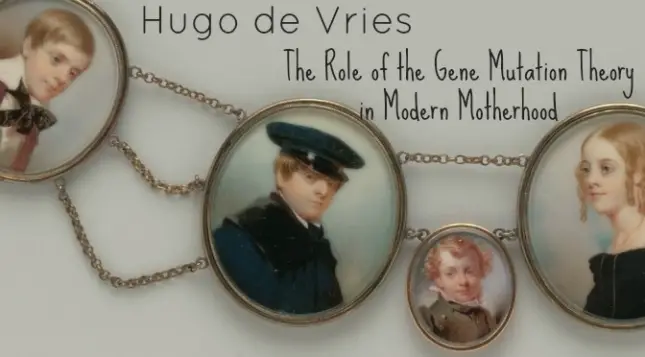Medically reviewed and approved by a board-certified member

MUTATION THEORY BY HUGO DE VRIES
It was proposed by Dutch botanist, Hugo devries in 1901.hugode-vries-mutation He was one of the rediscovered of Mendelism. Devries gave importance to those variations, which are discarded by Darwin. Though Devries thought that he proposed mutation theory in against to Darwin, but it was merged in Natural selection or rectified the detect of Darwin.
MUTATIONS — DEFINITION
Sudden, Large, hereditable variations are called mutations. Organisms having mutations are called mutants.
EXPERIMENTS OF DEVRIES
Devries observed mutations in Oenothera Lamarckiana. He conducted breeding experiments in that plant. Devries collected the seeds of 0. lamarckiana and sowed the seeds in his field. After sometime, he observed four new varieties of plants in addition to parent variety.
They are oenothera-mutations
- 0. zygas: It is taller than the parent.
- 0. nanella: It is shorter than the parent.
- 0. livifolia: It contains more number of leaves than the parent.
- 0. brivistylis: It contains shorter style than the parent.
Devries cross pollinated the four new varieties and parent variety.
He got few more new varieties. Devries continued the experiment for about ‘7’ generations. He got 50,000 plants. These 50,000 are 800 varieties. When these varieties were self pollinated, Devries got the same plants.
Based on the above experiment, he proposed some observations. They are
- New species appear suddenly but not slowly.
- Large, sudden changes appeared in living organisms, these are called mutations.
- Mutations are hereditable.
- Mutations occur during gametogenesis or fertilization.
- Mutations may be harmful or beneficial.
MUTAGENS
The mutation causing chemicals are called mutagens. These are natural and artificial mutagens. The natural mutagens are ‘X’ rays, U.V. rays, temperature etc. The artificial mutagens are formaldehyde, colchicin, ‘X’ rays etc. The mutations caused by natural mutagens are called spontaneous mutations. The mutations caused by artificial mutagens are called induced mutations.
For the success of evolution, mutations must occur in germplasm chromosomes, germplasm genes or germplasm D.N.A. The mutations are physically expressed in the next generation.
MUTATIONS — TYPES
Mutations are two types. These are chromosomal and gene mutations.
A. Chromosomal Mutations:
These are changes either in number or structure of chromosomes.
Normally individuals are diploid having two sets of chromosomes (paternal and maternal genome). Any change in the number of chromosomes of the gametes results the formation of mutations... The chromosomal number changes are polyploidy, haploidy and aneuploidy.
Chromosomal structure changes are of different types. They are duplication, inversion, translocation, deletion etc.
B. GENE MUTATIONS:
These are changes in the sequence of nitrogenous bases of D.N.A of gene. Gene mutations are also called Point mutations.
If gene changes, ‘m’ R.N.A is changed and finally sequence of amino acids in a protein is changed. The nutritional mutants or Auxotrophs were first observed in Neurospora by Beadle and Tatum.
Sometimes one gene mutation causes many changes phenotypically. Such mutations are called pleotrophic or polyphenic mutations.
MUTATIONS - EXAMPLES
- Albinism in man, rats, birds etc.
- Poly dactyly in human beings.
- Multi nipple condition in cattle.
- Presence of double flowers in Rose.
- Formation of Ancon sheep variety.
ROLE OF MUTATIONS IN EVOLUTION
According to Devries the evolution is very fast like horse running movement, but not slowly like snail’s movement as said by Darwin. Devries also said that there are no middle forms between the ancestor and new species. In other words the new individual was evolved directly from ancestor without middle forms.
A. Evolution of Giraffe:
According to Devries, the Giraffe was directly evolved from short necked Antelope due to the mutation in neck length controlling gene.
B. Evolution of Snakes:
According to Devries the snakes were directly evolved from limbed lizards due to the mutation in limbs controlling gene.
C. Evolution of Duck:
According to Devries the duck was directly evolved froth terrestrial birds due to change in the skin of digits of hind limb.
End of the article